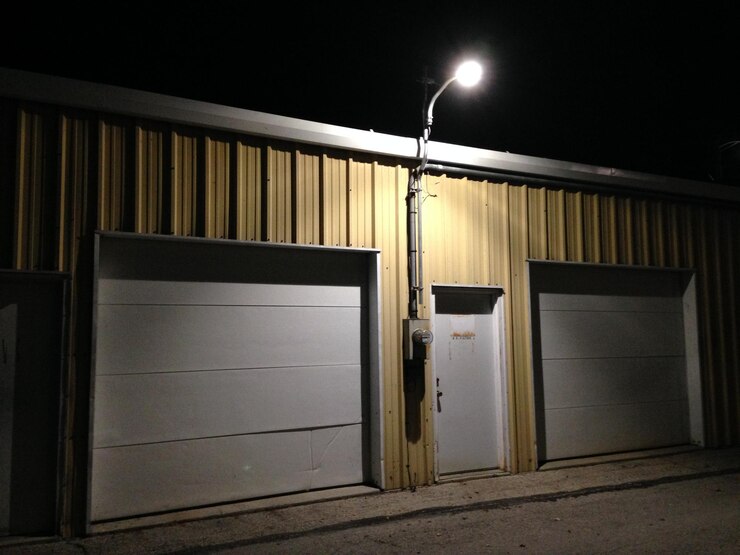Comparing Energy Efficiency in Different Garage Door Materials
Everything about our homes matters in this day and age when energy efficiency is critical for economic savings as well as environmental sustainability. Among these, garage doors often need to be noticed despite being a significant factor in a home’s energy consumption. This blog highlights the importance of energy efficiency in garage doors and compares various materials based on their insulation properties, durability, and environmental impact. By understanding the nuances of different garage door materials, homeowners can make informed decisions to enhance their energy efficiency and contribute towards a greener future.
Understanding Energy Efficiency In Garage Doors
Energy efficiency in garage doors is vital for maintaining optimal home temperatures and reducing energy consumption. These doors act as barriers between the interior and exterior environments, affecting heat transfer and insulation. Understanding energy efficiency involves considering factors such as the material’s insulation properties, ability to resist heat flow, and overall thermal conductivity.
By selecting a garage door with high energy efficiency, homeowners can minimize the need for cooling and heating, resulting in significant financial savings and environmental advantages. Moreover, an energy-efficient garage door can contribute to a more comfortable living environment by helping to regulate indoor temperatures and reduce drafts. Thus, comprehending the intricacies of energy efficiency in garage doors is essential for making informed decisions that promote sustainability and enhance home comfort.
Types Of Garage Door Materials
There are several materials for garage doors, each with unique qualities. Steel doors offer strength and durability, wood provides a classic aesthetic, aluminum is lightweight and corrosion-resistant, and fiberglass combines durability with low maintenance. Choosing the suitable material depends on preferences, climate, and desired insulation properties for optimal performance.
Overview of standard garage door materials
Garage doors are available in various materials, each with distinct characteristics and advantages. Common options include:
- Steel: Renowned for its durability and strength, steel garage doors offer robust security and protection against the elements. They are also relatively low-maintenance and come in a wide range of styles and finishes.
- Wood: Wood garage doors are prized for their timeless beauty and natural aesthetic. They can be crafted from various types of wood, providing homeowners with versatility in design and customization options to complement the architectural style of their home.
- Aluminum: Lightweight and corrosion-resistant, aluminum garage doors are an excellent choice for coastal areas or regions with high humidity. They are known for their sleek, modern appearance and can be easily customized to match the home’s overall look.
- Fiberglass: Fiberglass garage doors offer a durable, low-maintenance alternative to traditional materials. They provide good insulation against heat and cold, making them energy-efficient options for homeowners looking to reduce their energy costs. Additionally, fiberglass doors are resistant to dents, rust, and corrosion, ensuring long-lasting performance.
 Characteristics of each material
Characteristics of each material
When considering garage door materials, it’s essential to examine their key characteristics:
- Insulation Properties: Steel garage doors often come with insulation options, providing thermal resistance to regulate indoor temperatures. Wood naturally offers insulation but may require additional insulation materials. Aluminum and fiberglass doors can also be insulated for improved energy efficiency.
- Thermal Conductivity: Steel doors may have higher thermal conductivity, allowing heat to transfer more easily. Wood doors offer better thermal insulation due to their natural properties. Aluminum and fiberglass doors can have varying levels of thermal conductivity, depending on their design and insulation.
- Durability and Longevity: Steel doors are renowned for their robustness and ability to withstand dents and dings, making them a long-lasting option. While aesthetically pleasing, wood doors may require more maintenance to prevent warping or rotting over time. Aluminum doors are lightweight and resistant to corrosion, offering good durability. Fiberglass doors are durable and resistant to dents, rust, and corrosion, providing longevity with minimal maintenance.
Energy Efficiency Ratings
Garage doors’ energy efficiency ratings are essential for evaluating their thermal performance and possible savings. These ratings typically measure the door’s ability to resist heat flow, with higher ratings indicating better insulation. Understanding these ratings helps homeowners make informed decisions, particularly considering regional climate factors.
Factors such as the door material, thickness, and insulation type influence these ratings. Interpreting and comparing ratings allows homeowners to choose doors that align with their energy-saving goals and budget constraints. By selecting doors with higher energy efficiency ratings, homeowners can reduce energy consumption, reduce the expense of heating and cooling their homes, positively impact the environment, and experience more comfort.
Environmental Impact
Considering the environmental impact of garage door materials is crucial for sustainable living. Factors like manufacturing processes, recyclability, and long-term sustainability should be assessed to minimize ecological footprint and promote eco-friendly choices.
- Discussing the eco-friendliness of various garage door materials: When evaluating garage door materials, it’s essential to consider their environmental impact. Each material has unique properties that can affect sustainability, including manufacturing processes, resource depletion, and recyclability. Understanding these factors helps homeowners make eco-conscious choices when selecting garage doors.
- Recycling possibilities: Play a significant role in determining the environmental friendliness of garage door materials. Steel, aluminum, and fiberglass are often recyclable, reducing waste and conserving resources. Wood doors may also be repurposed or recycled, contributing to sustainable practices and minimizing landfill waste.
- Long-term sustainability considerations: Encompass factors such as durability, maintenance requirements, and overall lifespan. Choosing durable materials that require minimal maintenance can extend the life of garage doors, reducing the need for replacements and associated environmental impacts. Additionally, opting for materials with lower energy consumption during production and use contributes to long-term sustainability goals, promoting a greener and more eco-friendly lifestyle.
Cost Considerations
Cost considerations are crucial when selecting garage door materials. Factors such as initial costs, long-term savings, return on investment, and budget constraints must be weighed to decide with knowledge, financial limitations, and desired quality and performance standards. It plays a significant role in the selection of garage door materials:
Initial Costs
Different materials come with varying price points. While steel doors are generally more affordable upfront, wood doors are pricier due to their aesthetic appeal and customization options. Aluminum and fiberglass doors fall somewhere in between, depending on factors like insulation and design.
Long-Term Savings
While initial costs are essential, it’s crucial to consider long-term savings. Investing in a higher-quality, energy-efficient door may result in lower energy bills over time. Steel doors, for example, may offer significant savings on maintenance and repairs compared to wood doors, which may require more upkeep.
Return on Investment (ROI)
Evaluating the ROI of garage door materials involves weighing upfront costs against potential benefits. A more expensive but durable and energy-efficient door may provide better value in terms of longevity and reduced energy expenses, ultimately offering a higher ROI than a cheaper but less efficient option.
Budget Constraints
Ultimately, budget constraints play a significant role in decision-making. Homeowners should consider their budget limitations alongside their preferences and needs. While it’s essential to prioritize energy efficiency and durability, finding a balance that meets financial constraints without compromising too much on quality or performance is crucial.
Maintenance And Upkeep
Maintenance and upkeep are necessary to guarantee that garage doors operate smoothly and effectively. To minimize expensive repairs and guarantee maximum functioning and safety, routine inspections, lubrication, cleaning, replacement of weather stripping, and expert maintenance are recommended.
- Regular Inspections: For homeowners, regular inspections are essential to catch any potential issues early on, such as worn components or damage. This proactive approach prevents costly repairs and ensures the garage door runs safely and smoothly for long periods.
- Lubricating: Moving parts like hinges, rollers, and springs are essential to reduce friction and wear. By doing so, homeowners can extend the door’s lifespan and prevent premature breakdowns, ultimately saving on repair costs and ensuring the door operates efficiently.
- Routine cleaning: Removing dirt, debris, and buildup from the door’s surface and tracks is crucial. This prevents corrosion and maintains optimal functionality, ensuring the garage door operates smoothly without obstructions or hindrances.
- Weather Stripping Replacement: Weather stripping can deteriorate over time, compromising the door’s insulation and allowing drafts. Therefore, replacing worn weather stripping is essential to maintain energy efficiency and prevent moisture infiltration, ultimately preserving the integrity of the garage and its contents.
- Professional Maintenance: Hiring a professional for regular maintenance and tune-ups ensures thorough inspection and servicing of all components. This includes identifying and addressing potential issues before they escalate, ensuring the garage door operates safely and efficiently, providing homeowners peace of mind, and avoiding costly repairs in the long run.
Conclusion
Selecting the suitable garage door material is crucial for enhancing energy efficiency, durability, and sustainability. Homeowners can make informed decisions that align with their needs and values by comparing various materials based on insulation properties, thermal conductivity, and environmental impact. Additionally, considering cost considerations, maintenance requirements, and long-term savings can help optimize the investment in a garage door.
Each material offers unique benefits and considerations, whether it’s steel, wood, aluminum, or fiberglass. Ultimately, prioritizing energy efficiency, durability, and environmental friendliness ensures cost savings and contributes to a greener future. With careful consideration and proactive maintenance, homeowners can enjoy efficient, reliable, and environmentally responsible garage doors for years.


 Characteristics of each material
Characteristics of each material